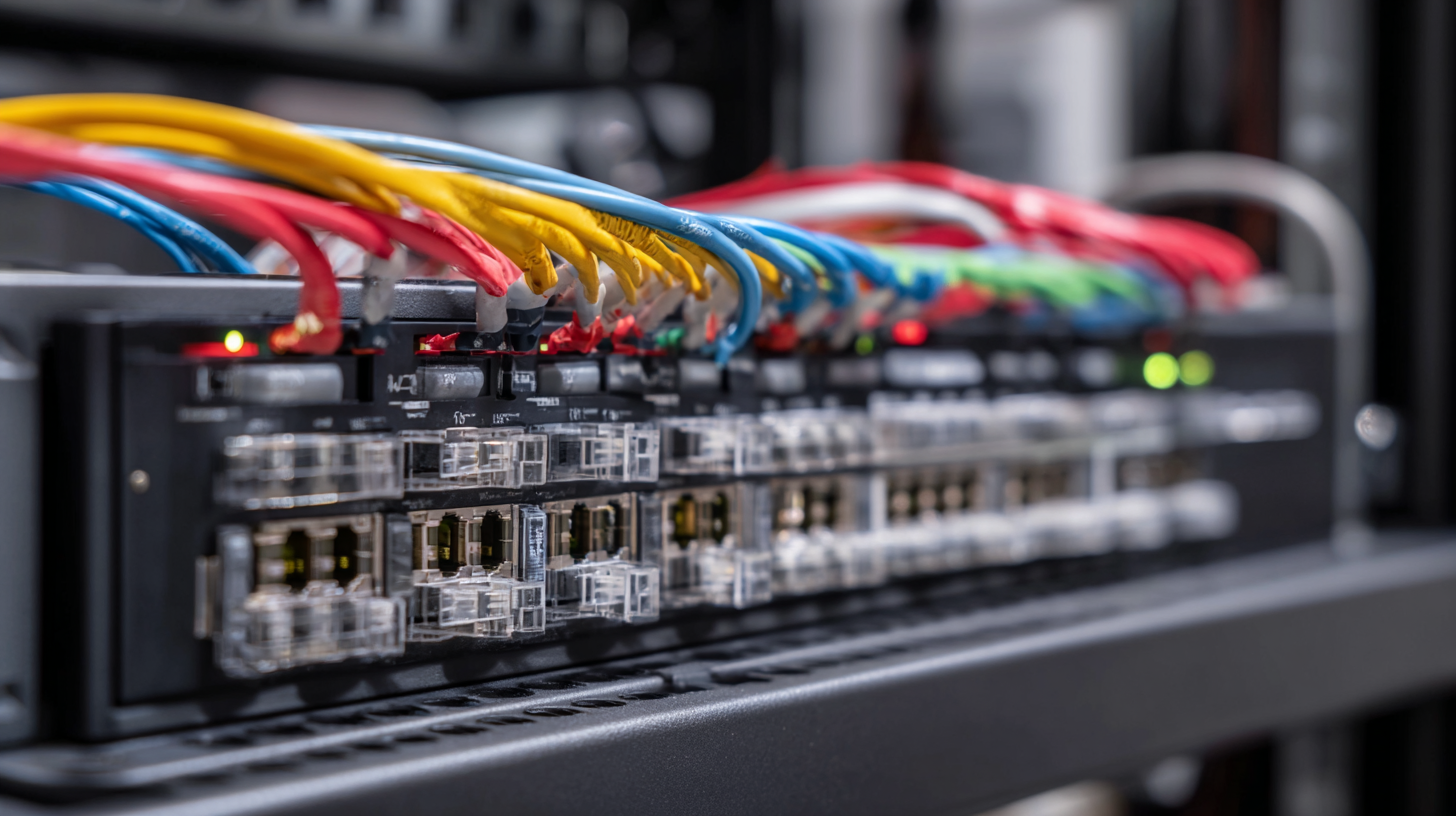
- [email protected]
- Mon - Sat at 7:00AM to 9:00PM
Leave Your Message

In today's fast-paced business environment, selecting the right Bypass Poe Switch is crucial for ensuring seamless network functionality and reliability. According to a recent report by MarketsandMarkets, the global market for Power over Ethernet (PoE) technology is projected to grow from $2.2 billion in 2020 to $5.9 billion by 2025, reflecting an increasing demand for efficient and uninterrupted power solutions in various industries. A Bypass Poe Switch not only facilitates the connection of PoE devices but also offers essential benefits such as network resilience during unexpected outages, reduced downtime, and enhanced operational efficiency. By investing in the right Bypass Poe Switch, businesses can significantly improve their infrastructure, reduce long-term costs, and ensure optimal performance of critical applications. This ultimate checklist will guide you through the essential factors to consider when choosing the best Bypass Poe Switch tailored to your specific business needs.

When evaluating bypass PoE switches for your business applications, it's essential to consider several key factors that can significantly impact your network's performance and efficiency. First and foremost, the power capacity of the switch should align with your device requirements. Determine the total PoE budget needed for your connected devices, such as IP cameras, wireless access points, and VoIP phones. Ensure that the switch can provide sufficient power output without exceeding its limits, allowing for seamless operation even during high-demand periods.
Another critical aspect is the functionality of the bypass feature itself. This capability allows uninterrupted network service during power failures or switch malfunctions. Assess the switch’s failover mechanism; it should automatically reroute traffic to maintain connectivity. Additionally, pay attention to the build quality and reliability of the switch, especially if your business operates in a high-traffic environment. A robust and durable design will not only enhance longevity but also reduce downtime and maintenance costs, ensuring your business remains connected without interruptions.
| Criteria | Description | Importance Level |
|---|---|---|
| Power Budget | Ensure the switch supports enough power for all connected devices. | High |
| Port Count | Consider the number of devices that will need a connection. | Medium |
| Speed | Confirm the switch achieves the required data transmission speed. | High |
| Compatibility | Check for compatibility with existing network infrastructure. | High |
| Management Features | Assess if features like VLANs and monitoring are needed. | Medium |
| Form Factor | Decide between rack-mounted or standalone units. | Low |
| Reliability | Determine if the switch has a good track record for uptime. | High |
| Cost | Evaluate if the price fits within budget constraints. | High |
Power over Ethernet (PoE) technology has revolutionized the way businesses deploy their network infrastructure. By enabling data and power transfer through a single cable, PoE significantly enhances installation efficiency and reduces costs associated with running multiple lines. With the global ethernet switch chips market projected to reach USD 4.3 billion by 2033, it's clear that demand for integrated solutions like PoE is on the rise. This technology not only simplifies network setups but also supports the growth of devices such as IP cameras, Wi-Fi access points, and VoIP phones that are essential for modern business operations.
Looking ahead, the Power over Ethernet solutions market is expected to grow remarkably, with estimates forecasting it to exceed USD 700 million in 2018 and continue expanding at a robust compound annual growth rate (CAGR) of over 15% from 2019 to 2025. This trend highlights the increasing reliance on PoE technology across various sectors, driving efficiency and scalability in network design. As businesses seek cost-effective and flexible networking options, understanding PoE's impact becomes crucial in making informed decisions for their infrastructure needs.
When selecting a Bypass Poe Switch for your business, the reputation of the manufacturer plays a
crucial role in ensuring both product reliability and ongoing support. Established manufacturers with a solid
track record are more likely to produce high-quality devices that perform consistently over time. These companies
often invest in robust testing and quality control measures, which translates into lower failure rates and longer
lifespan for the equipment.
Tip: When researching potential manufacturers, look for
online reviews, industry certifications, and case studies that highlight their experience and customer satisfaction
levels. A brand with positive feedback from reputable sources can provide greater confidence in your
purchase.
Furthermore, a reputable manufacturer usually offers better customer support services. This includes technical
assistance, warranty options, and timely updates. When issues arise, having access to knowledgeable support
personnel can minimize downtime and disruptions to your business operations.
Tip: Before making a decision, inquire about the
manufacturer's support channels and response times. Companies that prioritize customer service often have
dedicated teams ready to assist when you need it the most, ensuring a smooth experience long after the installation.
When selecting a Bypass POE switch for your business, scalability and future-proofing are crucial factors to consider. According to a report from MarketsandMarkets, the global Ethernet switch market is expected to grow from $24 billion in 2020 to $34 billion by 2025, indicating a significant demand for adaptable network solutions. A scalable Bypass POE switch can accommodate growing bandwidth requirements and the expanding number of network devices. It is essential to choose a model that supports a range of PoE standards, such as IEEE 802.3af and 802.3at, allowing your infrastructure to evolve alongside emerging technologies.

In addition to scalability, future-proofing your switch choice involves evaluating features that might be essential in the coming years. For instance, with the increased adoption of IoT devices—predicted by Gartner to exceed 25 billion by 2025—having a switch that supports advanced management features, such as Layer 3 routing and automation capabilities, can enhance operational efficiency. Investing in a Bypass POE switch that incorporates such cutting-edge functionalities not only secures your current investments but also prepares your network for the complexities of future connectivity demands.
When selecting a bypass PoE switch for your business, understanding the comparative performance metrics of leading brands is essential. A recent study by the Network Switch Institute revealed that brands such as Cisco, Netgear, and TP-Link exhibited significant differences in their throughput rates and energy efficiency. Cisco's latest model boasted a throughput of up to 1.8 Gbps, which is 30% higher than Netgear's comparable offering. In addition, TP-Link's energy consumption metrics showed it consumed 15% less power under full load compared to its competitors, making it a cost-effective choice for businesses focusing on sustainability.
Tip: Before selecting a bypass PoE switch, conduct a thorough analysis of your current and future network needs. Consider peak usage times and the types of devices connected. This forecasting will prevent bottlenecks and ensure seamless operation during critical business periods.
Moreover, latency is another crucial performance metric to analyze. A report from the Technet Network Corporation indicated that lower latency in switch operations led to a 20% increase in overall system responsiveness. Cisco switched maintained average latencies around 2ms, while TP-Link hovered closer to 5ms. Businesses that rely heavily on real-time applications should prioritize those with low latency performance.
Tip: Always consult the manufacturer's documentation for performance specifications during your research phase. Real-world performance may vary based on environmental factors, so examining peer reviews and case studies can provide additional insights into how a switch performs in practical scenarios.
